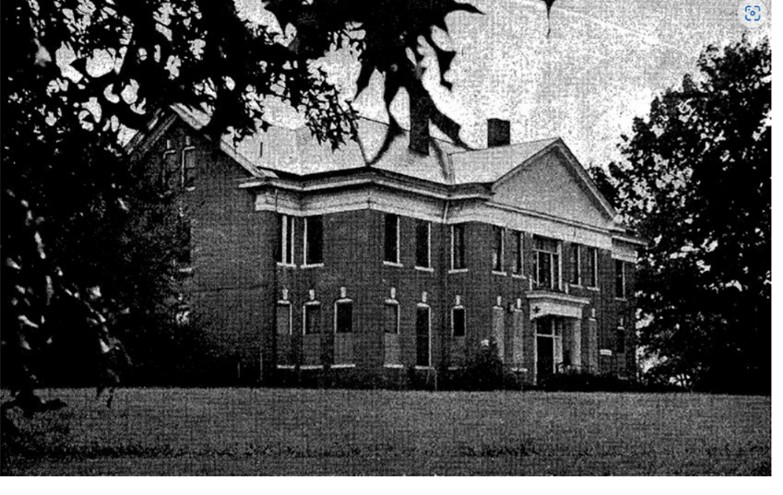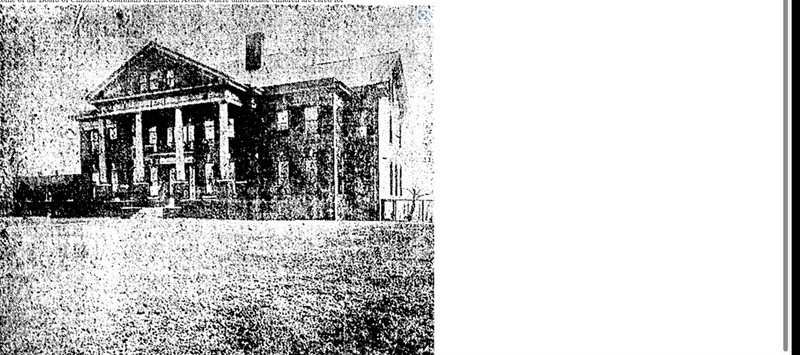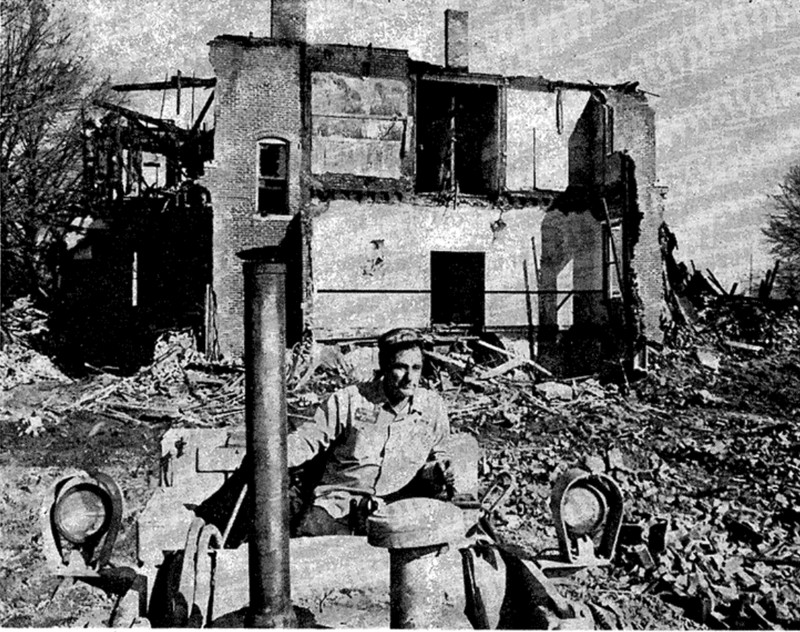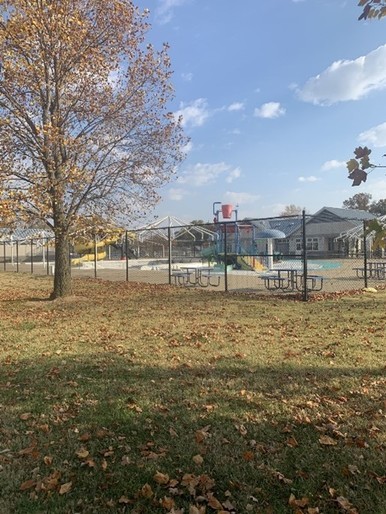The Guardian Home
Introduction
Text-to-speech Audio
Established in the 1850s, the Guardian Home was the county's first orphanage for white boys. The orphanage closed due to the Great Depression but was reopened as a WPA office for a few short years. During the Second World War, the building operated as the United Service Organization for African Americans. After the war, the newly named Community Carver Center remained open with the new goal of providing social and welfare programs to the surrounding neighborhood. A fire caused the building to be razed in 1973, but it was eventually replaced by the now-standing Rochelle-Landers Pool.
PSA: Stay at Rochelle-Landers Pool for this entry but also for Liberty Baptist Church, if you look to the corner of Rochelle-Landers Pool you will see a Liberty Baptist Church landmark located close to the landmark for the Guardian Home, utilize the landmark and only travel to the church if you want to!
Images
Guardian Home in 1972

Guardian Home in 1917

Carver Community Center 1973

Rochelle-Landers Pool in 2023

Backstory and Context
Text-to-speech Audio
The Guardian first housed wards of the county. The orphanage was strictly for white boys and was erected in the 1850s. It was built on a hill at 507 Lincoln St. The building was originally owned by the county and governed by the Board of the Guardian Home. The Guardian Home had 14 rooms that were 15 by 15 feet and a dining room that was 50 by 75 feet. USI’s digital archives stated that its location was not within city limits at the time of its inception. Because of this, it is not traceable through city directories, and its earliest newspaper mention wasn’t until 1902. Information about the Guardian Home during its earlier days are scarce.
Improvements that were made to the property were not recorded since there were no tax assessments necessary for a government-owned building. Many of the records were lost or destroyed as political offices changed. The orphanage remained in operation until the Great Depression. During this time, children moved to the Orphan Home that opened in October of 1872, which housed children of all races and genders during its first 10 years of operation. Due to the newer opening of orphanages in the city, the depleting Guardian Home was no longer recognized as an orphanage.
During the 1930’s, the home housed the WPA (Works Progress Administration) for a short period of time. The building was used as a local office. Charles Rochelle discussed in an interview with Darel Bigham that the WPA program helped African Americans get benefits with federal money. Rochelle stated that, "for the most part the WPA helped both blacks and whites alike". As a result, African Americans in Evansville were given opportunities that were previously not available to them. The WPA offered similar work to both whites and African Americans, but the work remained segregated. The program allowed for the training of African Americans on shipbuilding and the airplane factory, which were prominent industries in Evansville during WW2. Newspaper articles notes the WPA gave jobs in road and sewer construction as well as other public works projects.
During WW2, the building was converted into a USO (United Service Organizations) for African Americans known as the Carver Center. The approval of a $35,000 recreational USO center building for white servicemen at 8th and Main Street was said to be opened for the convenience and pleasure of thousands of white soldiers. These soldiers, who were stationed at Camp Breckenridge spent a great deal of their free time in Evansville. But discussion of what the 6,000-7,000 colored soldiers from Camp Breckenridge, would do in Evansville sparked conversation for a colored USO organization in Evansville. A center for African Americans in Evansville was debated due to its potential to be a “political plum”, which means to suffer from its political affiliations. But that didn’t change the argument that African Americans fighting for our country deserved a recreational spot that’s just as convenient as the white USO.
Local agencies, of both black and white, determined the Guardian Home was a desirable building for the African American USO Club. Once opened, the club served as a recreational building that hosted dances, live music, and refreshments for servicemen. Provided 150 cots to servicemen, stationery to write letters home, books and magazines, and games for the men to play.
After the war, the building remained open under the name Carver Community Center. A series of meetings and conferences were held about what was to become of the building after the war. The result of these meetings was a $15,000 grant to staff to operate the building the following year. The building served as a social and recreational place for African Americans in the community. It was named after George Washington Carver, who was an influential African American during the 19th century. He was an agricultural scientist and inventor. T.B. Neely, who was a laundry boy for Dr. Carver in his earlier days and operated the Cherry St. YMCA for more than 40 years. He persuaded the group to name the building in honor of George Washington Carver.
In 1948, the organization became non-profit and became a member of the Community Chest, which is now known as the United Way of Southwest Indiana. James M. Landers served as the boy’s program director and, in 1960, became Executive Director. In 1967, the property relinquished its power to the Recreation Commission of the City of Evansville. Its new mission was to provide a social welfare service to the neighborhood surrounding the building. During the 1970s, it shifted its focus to child care and educational activities. In 1988, James M. Lander retired as executive director and was replaced by David Wagner, who focused on strengthening existing relationships and creating new partnerships. A fire in October of 1972 caused the building to close and remain vacant. In spring of 1973 the building was razed.
After the building was razed, the city decided to replace the building with a pool known as Rochelle-Landers pool. The pool was named after Charles Rochelle, a prominent member of the African American community, who served as principal of Lincoln School for over a decade. It was hyphened with Landers to give honor to the organization’s previous executive director for many years, who was credited with much of the Carver Community Center's success. The pool still remains one of the cities five public pools and opens each summer to the public.
Reminder: For next location of Liberty Baptist Church stay at current location but look to the corner for Liberty Baptist Church's landmark which is located at the corner of Rochelle-Landers Pool, rather than walking a few blocks to the actual location 701 Oak St.
Sources
Guardian Home , Historic Evansville . Accessed November 27th, 2023. https://www.historicevansville.com/site.php?id=guardian.
Folz, Edna. "Closed Carver Center Hangs in Memory." Evansville Courier and Press (Evansville ) September 29th, 1972. .
Anglin, Robert. "We Need a USO Center." Evansville Argus (Evansville) October 24th, 1942. .2.
"Charles Rochelle Interview conducted by Darell Bigham of Evansville Indiana." University Archives and Special Collections, USI Digital Archives. Charles Rochelle Interview - Oral History Collection - Rice Library Digital Collections (usi.edu)
Smith, Daniel . "Vanderburgh County's First Orphanage ." Courier and Press (Evansville) June 18th, 2018. .
George Washington Carver , History.com. October 27th, 2009. Accessed November 27th, 2023. https://www.history.com/topics/black-history/george-washington-carver.
Decker , Charles . "USO Center to Be Located in Guardian Home on Lincoln." Evansville Argus (Evansville) September 5th, 1942. .2.
Evansville Marker is the Countys First to Recognize African American History , Indiana Land Marks . October 13th, 2020. Accessed November 27th, 2023. https://www.indianalandmarks.org/2020/10/evansville-marker-is-countys-first-to-recognize-african-american-history/.
Evansville Press 9/29/1972
Evansville Press 2/24/1917
Don Gopi, 2/24/1973
Emma Boyd 11/7/23
